- Joined
- Oct 22, 2018
- Messages
- 149
- Points
- 253

This is the last addition I have made to my collection. I have not published its construction process in the forum because, being similar to the one I have used in other models, I have the impression that it could have turned out without much interest.
And now, by way of introduction, a bit of history: the “speronara” was a boat used mainly in Malta, although it was also present in Sicily. It had remarkable nautical qualities, mainly highlighting its speed, which is why it was frequently used by Maltese for smuggling. In addition to its curious and characteristic spur, this boat was lighter in construction than others of similar dimensions, such as the “bovo” or the “schifazzo”, which gave it a lower draft, which was undoubtedly one of the reasons why that smugglers preferred it, another reason being that this lightness allowed them to be easily beached on the beaches The function of the extension of the cutwater as a spur has given rise to various conjectures, which in the end are reduced to two possibilities: either it was a mere ornamental element or it was a reinforcement of the bow, both being valid and not exclusive explanations. A typical characteristic of the "speronaras" was the cabin, covered by a tarred cloth, which occupied a large part of the stern and which served to keep the crew of four or five men safe. They also stood out for being painted with bright colors The "speronaras" hoisted one, two or three sticks with a Latin candle, also carrying one or more jibs, although they could also be riggedThis is the last addition I have made to my collection. I have not published its construction process in the forum because, being similar to the one I have used in other models, I have the impression that it could have turned out without much interest by repetitive. And now by way of introduction, a bit of history: the “speronara” was a boat used mainly in Malta, although it was also present in Sicily. It had remarkable nautical qualities, mainly highlighting its speed, which is why it was frequently used by Maltese for smuggling. In addition to its curious and characteristic spur, this boat was lighter in construction than others of similar dimensions, such as the “bovo” or the “schifazzo”, which gave it a lower draft, which was undoubtedly one of the reasons why that smugglers preferred it, another reason being that this lightness allowed them to be easily beached on the beaches The function of the extension of the cutwater as a spur has given rise to various conjectures, which in the end are reduced to two possibilities: either it was a mere ornamental element or it was a reinforcement of the bow, both being valid and not exclusive explanations. A typical characteristic of the "speronaras" was the cabin, covered by a tarred cloth, which occupied a large part of the stern and which served to keep the crew of four or five men safe. They also stood out for being painted with bright colors The "speronaras" hoisted one, two or three masts with a Latin sail, also carrying one or more jibs, although they could also be rigged with a spritsail. It was frequently used for the transport of goods, passage and mail over short distances.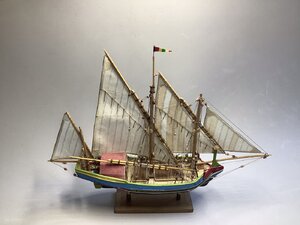
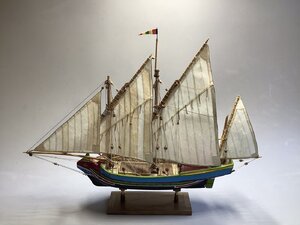
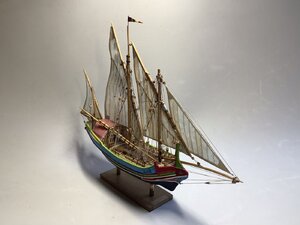
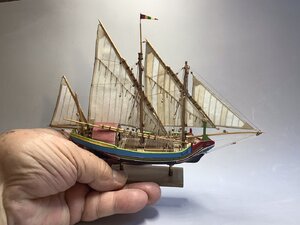
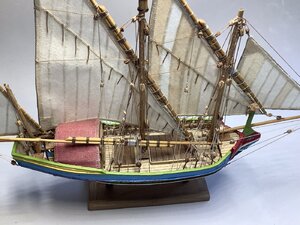
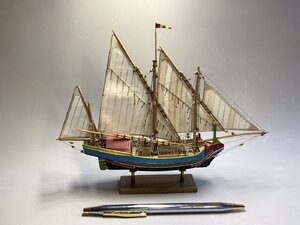
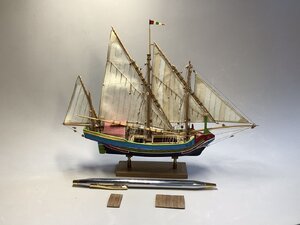
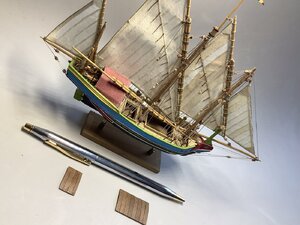
And now, by way of introduction, a bit of history: the “speronara” was a boat used mainly in Malta, although it was also present in Sicily. It had remarkable nautical qualities, mainly highlighting its speed, which is why it was frequently used by Maltese for smuggling. In addition to its curious and characteristic spur, this boat was lighter in construction than others of similar dimensions, such as the “bovo” or the “schifazzo”, which gave it a lower draft, which was undoubtedly one of the reasons why that smugglers preferred it, another reason being that this lightness allowed them to be easily beached on the beaches The function of the extension of the cutwater as a spur has given rise to various conjectures, which in the end are reduced to two possibilities: either it was a mere ornamental element or it was a reinforcement of the bow, both being valid and not exclusive explanations. A typical characteristic of the "speronaras" was the cabin, covered by a tarred cloth, which occupied a large part of the stern and which served to keep the crew of four or five men safe. They also stood out for being painted with bright colors The "speronaras" hoisted one, two or three sticks with a Latin candle, also carrying one or more jibs, although they could also be riggedThis is the last addition I have made to my collection. I have not published its construction process in the forum because, being similar to the one I have used in other models, I have the impression that it could have turned out without much interest by repetitive. And now by way of introduction, a bit of history: the “speronara” was a boat used mainly in Malta, although it was also present in Sicily. It had remarkable nautical qualities, mainly highlighting its speed, which is why it was frequently used by Maltese for smuggling. In addition to its curious and characteristic spur, this boat was lighter in construction than others of similar dimensions, such as the “bovo” or the “schifazzo”, which gave it a lower draft, which was undoubtedly one of the reasons why that smugglers preferred it, another reason being that this lightness allowed them to be easily beached on the beaches The function of the extension of the cutwater as a spur has given rise to various conjectures, which in the end are reduced to two possibilities: either it was a mere ornamental element or it was a reinforcement of the bow, both being valid and not exclusive explanations. A typical characteristic of the "speronaras" was the cabin, covered by a tarred cloth, which occupied a large part of the stern and which served to keep the crew of four or five men safe. They also stood out for being painted with bright colors The "speronaras" hoisted one, two or three masts with a Latin sail, also carrying one or more jibs, although they could also be rigged with a spritsail. It was frequently used for the transport of goods, passage and mail over short distances.













